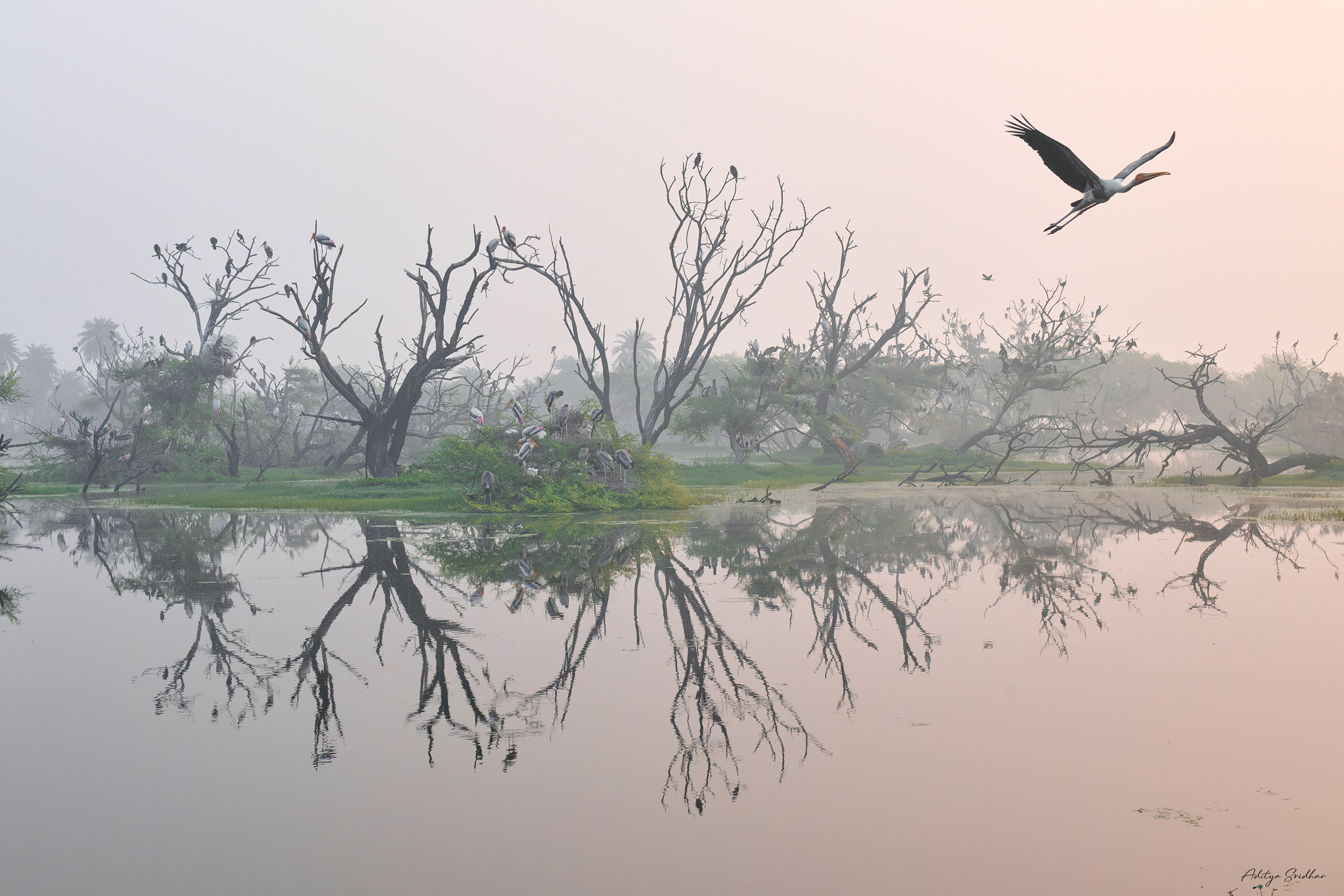
I genuinely believe observing and photographing this particular colony of Painted Storks forms a core part of the definitive Bharatpur experience. It continues to baffle me how a location can feel so otherworldly while remaining deeply familiar, ethereal yet so grounding.
During every single one of my previous visits to Bharatpur, this landscape was wrought with imperfections, be it the lack of birdlife, the low water levels, or the outright absence of colour in the scene. These were merely symptoms of a cause that ran far deeper, however. For some context, the park is highly dependant on the Indian monsoon for the replenishment of its water levels and the nourishment of its vegetation. The lean 2022-2023 seasons were devastating for the park’s wildlife, resulting in relatively quiet breeding seasons for most of the migratory species that overwinter at this site. This year, however, things were slightly different. A rather generous monsoon meant the birdlife numbers spiked to a degree unheard of in the past decade or so; there was a sense of liveliness to the park that I’d, personally, never seen before.
In spite of this, over the course of 10 days, I found myself repeatedly overlooking this scene in favour of other, more conventionally appealing compositions. I suppose that could be chalked up to a number of things – my hesitance to photograph this landscape given its poor track record being one of them – but there was always something that kept tugging at me every time I walked by this stretch. On my final morning, I decided to take one last shot at this composition.
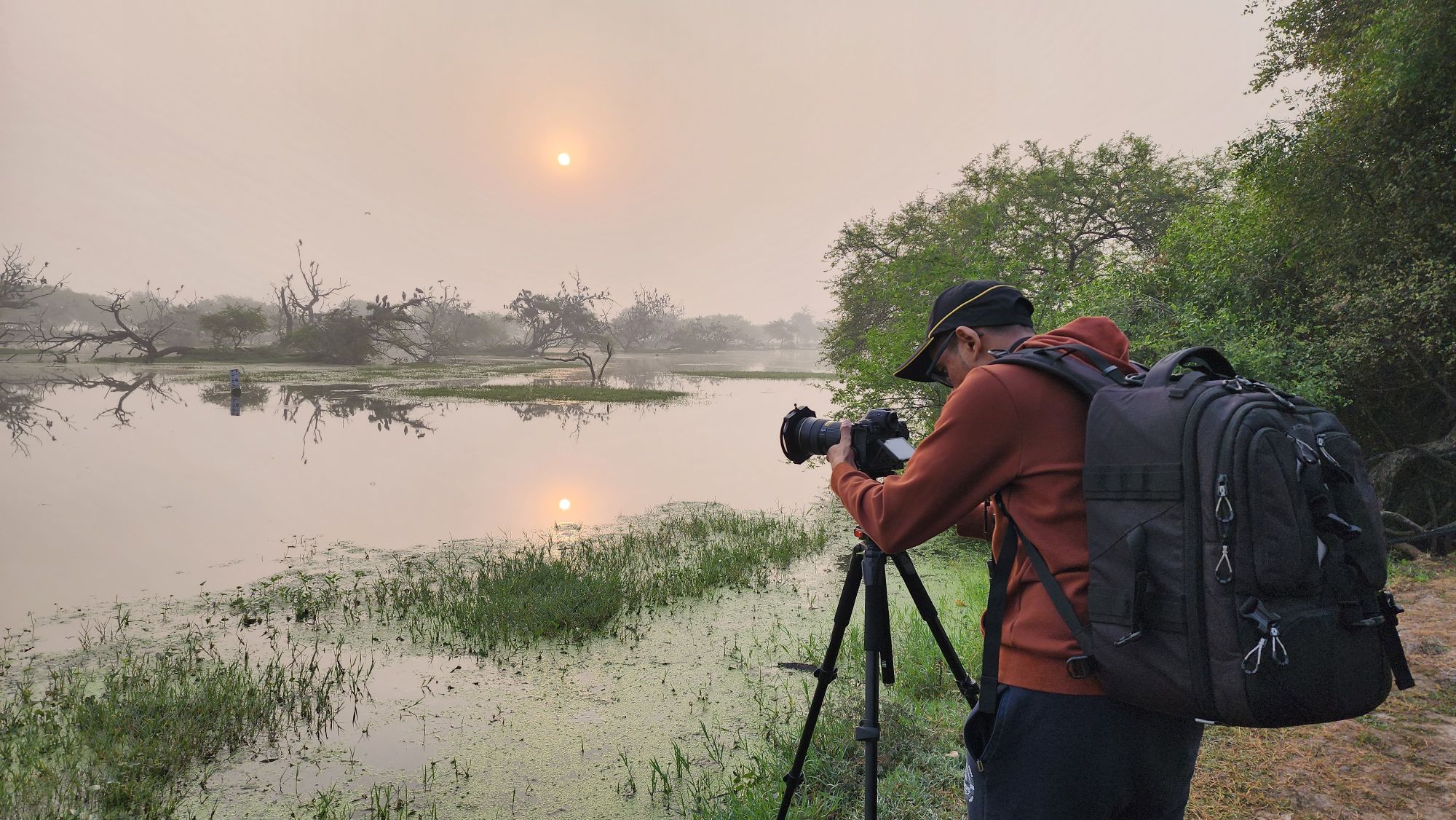
The Finer Details.
For pretty much the entirety of my trip, a carpet of green algae and other aquatic plants had obscured the reflections on the water’s surface at this location. In what can only be attributed to sheer luck, steady winds and a gentle flow of water meant I had crystal clear reflections on this cool, misty morning. All I had to do, at least in theory, was to set my camera up and, with a remote trigger in my hand, wait for a fly-by from one of the thousands of Painted Storks at this rookery.
Oh, how I wish it were that simple…
When photographing landscapes and large bird colonies, in particular, I like to mentally sort the elements of the scene into two primary categories – fixed and variable. Next, I split the controllable and uncontrollable components within the two broader brackets into their own separate groups.
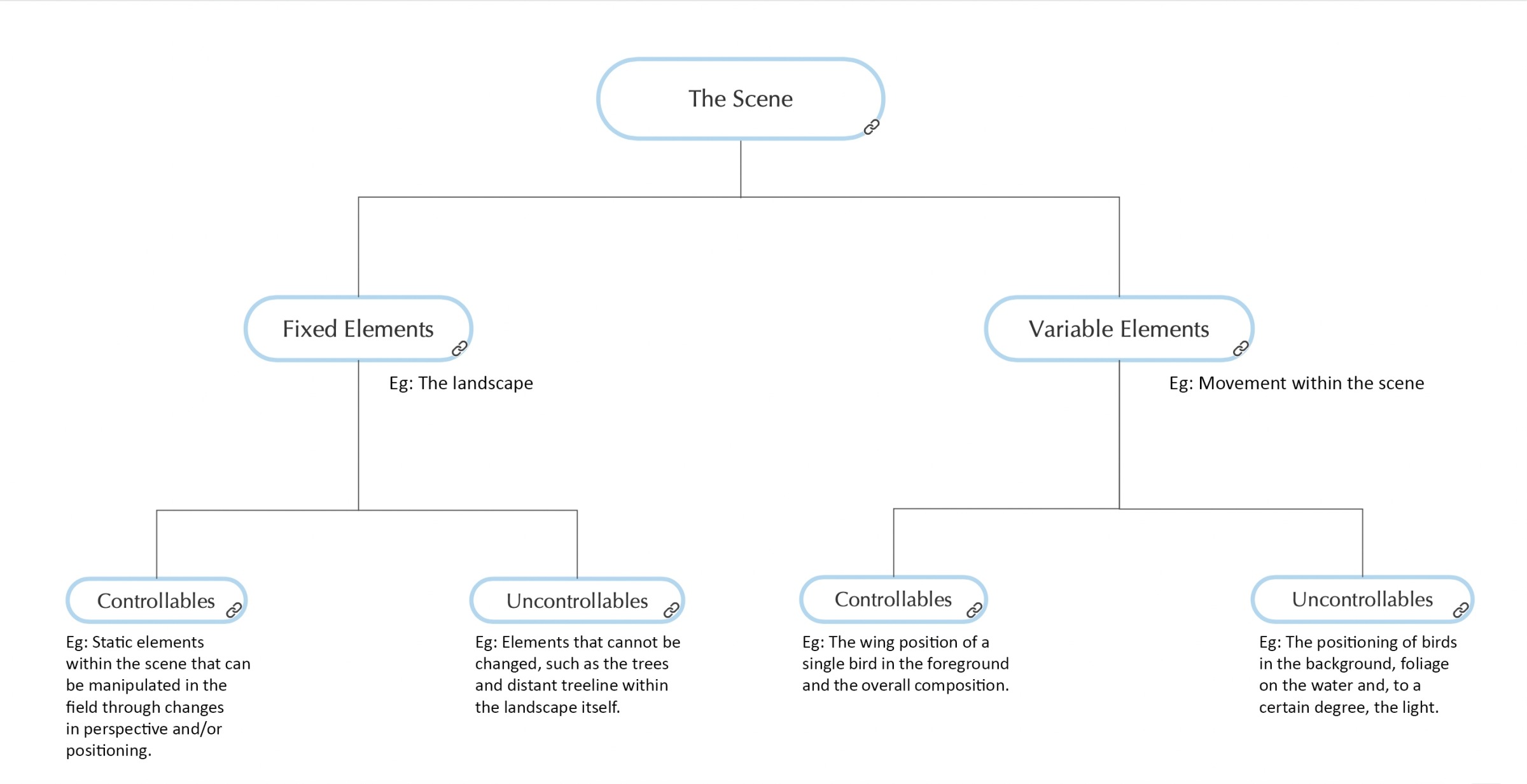
Compartmentalising my thoughts in this manner allows me to stay organised and focused on the bigger picture. It also helps keep my emotions in check when things go south (as they often do).
Attempt Numero Uno.
I spent around an hour and a half at this location, shooting around 2,000 images in multiple short bursts. Only two of them turned out the way I’d hoped. This is one of them.
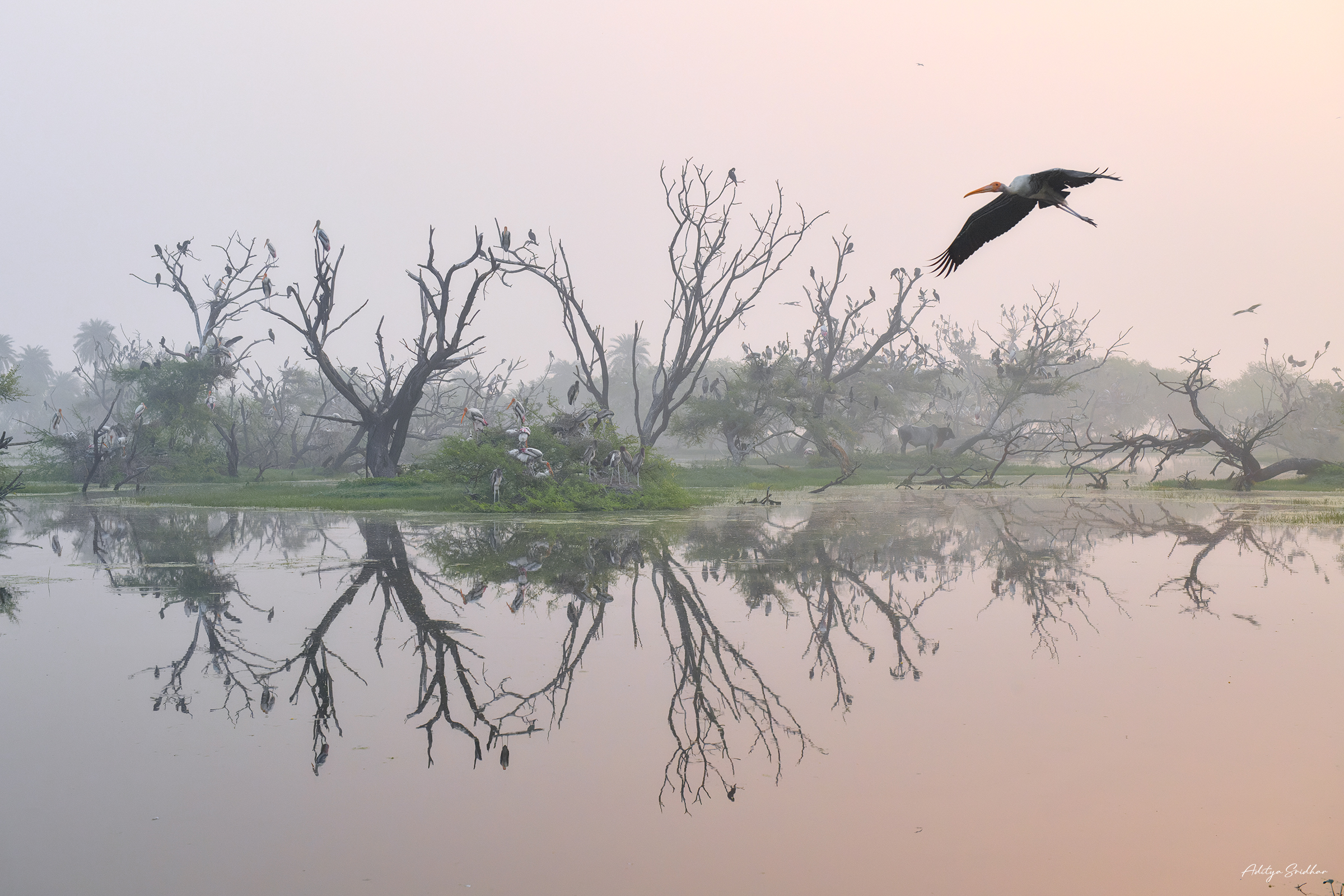
Looking at this image on the back of my camera, I was quite thrilled. The placement of the bird, its size in the frame, and the overall composition seemed to hit all the right notes for me. However, once the initial adrenaline wore off, a single major flaw caught my eye, draining all the excitement that had built-up over the course of the morning. Can you guess what that is?
Spoiler alert, it’s the positioning of the stork’s far wing. It’s just a bit too close to the tree line in the background for my taste, taking some polish off the final composition. Had the bird been placed even just a few millimetres to the right of its current positioning in the frame, this shot would’ve been a winner in my eyes. As it stands, though, it’s destined to the reject pile.
It might seem harsh to some, and I suppose to a certain extent, it is. I really like the perched birds in this version. The very slightly cleaner reflections are also a plus. And, of course, I’d be remiss if I failed to mention the cow hidden within the distant foliage – it’s a tiny detail that I personally enjoy quite a bit.
Tiny margins, eh?
The Other One.
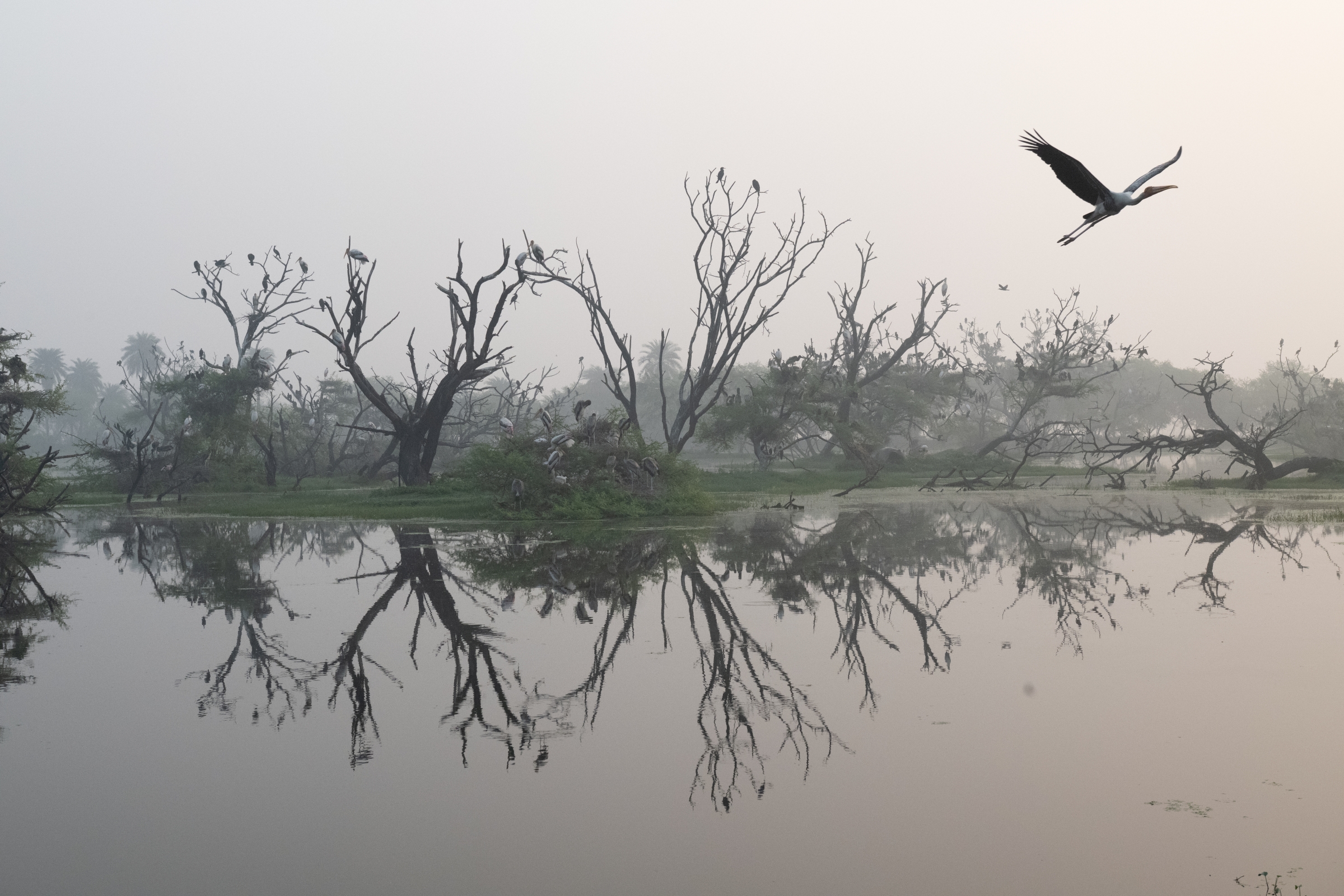

In contrast to the first attempt, I wasn’t nearly as excited about this image. I wasn’t particularly impressed with the bird’s pose and placement. There were fewer birds perched on the trees too, and the reflections on the water weren’t as clean as they were in the earlier capture. I was ready to trash it, but decided to hold on to take a closer look on my laptop.
As it turns out, a quick 5-minute edit was all it took to completely change my opinion of this shot. Who would’ve thought? Clearly, not me. Jokes aside, the more time I spent looking at this composition, the more it grew on me. What exactly flicked that switch in my mind is quite simple to explain, really.
There’s an intangible aspect to every image – the element of story-telling. It’s one of the foundational blocks of photography. What the first attempt fails to convey is the sense of a busy bird colony; the aforementioned flaws draw all the attention away from the over-arching story, something the second image does a much better job of. The placement of the Stork as its flying out of frame helps tells the tale of a hard-working parent in search of food and nesting material for a busy breeding season ahead.
Bonus Content.
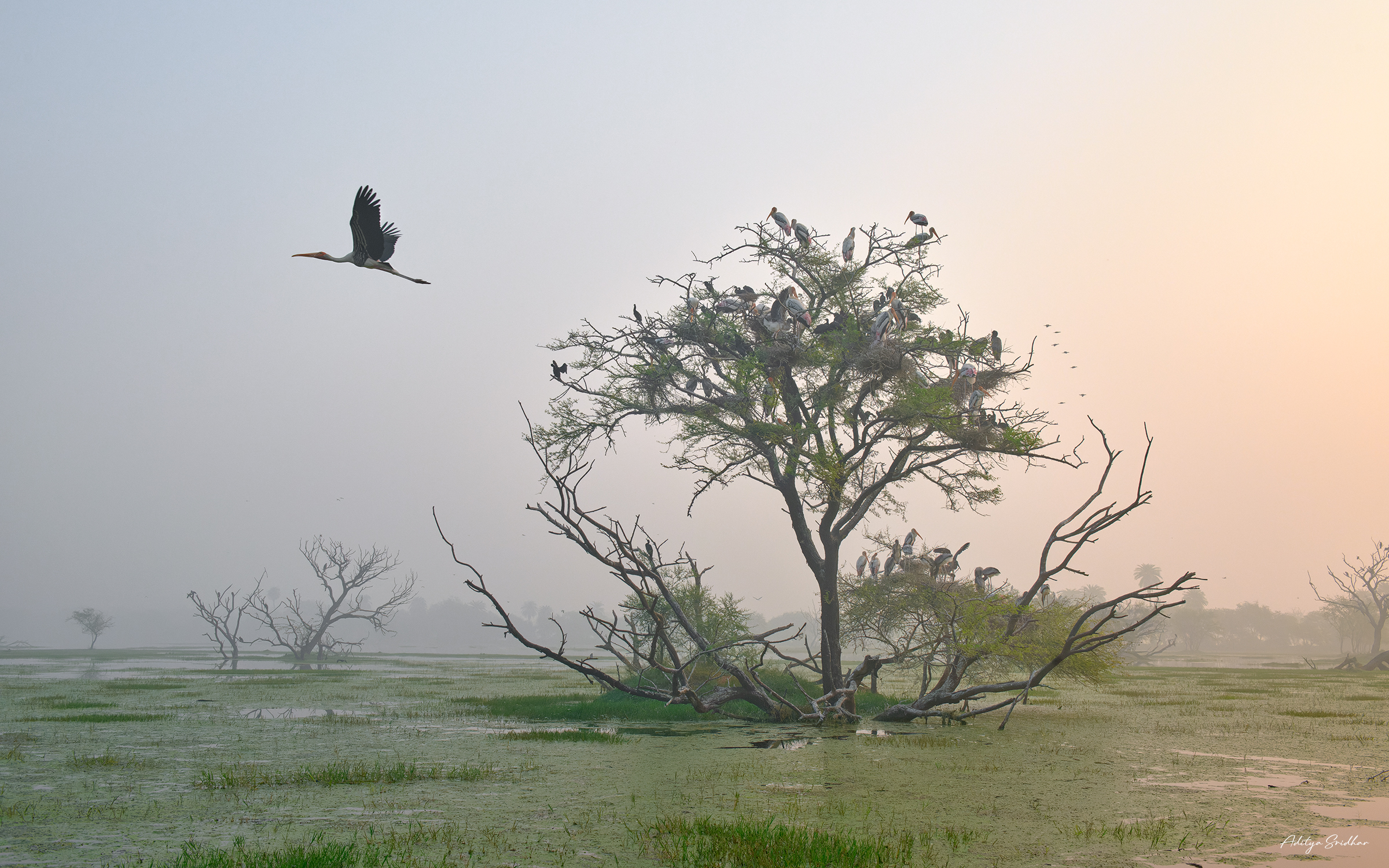
This is another composition I worked on to try and evoke that same kind of emotion, but I find that it’s just not quite there in terms of conception and execution. While I’m satisfied on the technical front, I find that there’s a bit too much vacancy surrounding the main tree to sell the idea of a buzzing colony. There’s very little activity in the sky, too, save for the lone Painted Stork on the left and the distant cormorants on the right. The flat-ish light caused by the morning mist is the final nail in the coffin for this one, I’m afraid. Make no mistake, I’m quite happy to have this shot in my gallery, but there’s a lot of room for improvement, in my opinion.
Conclusion.
Well, that was another wordy one, huh?
Thanks for sticking around until the end. I hope you found this post entertaining and informative. I really enjoy discussing the nitty-gritty of the artistic side of photography, and this mini-series has been the ticket to let me lean into that aspect of things. See you in the next one!

